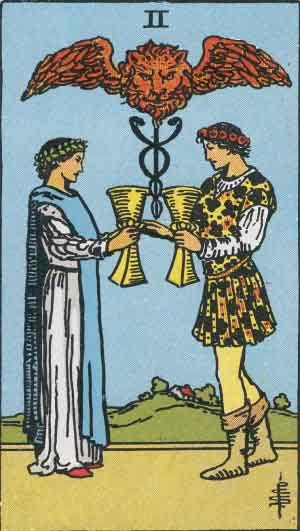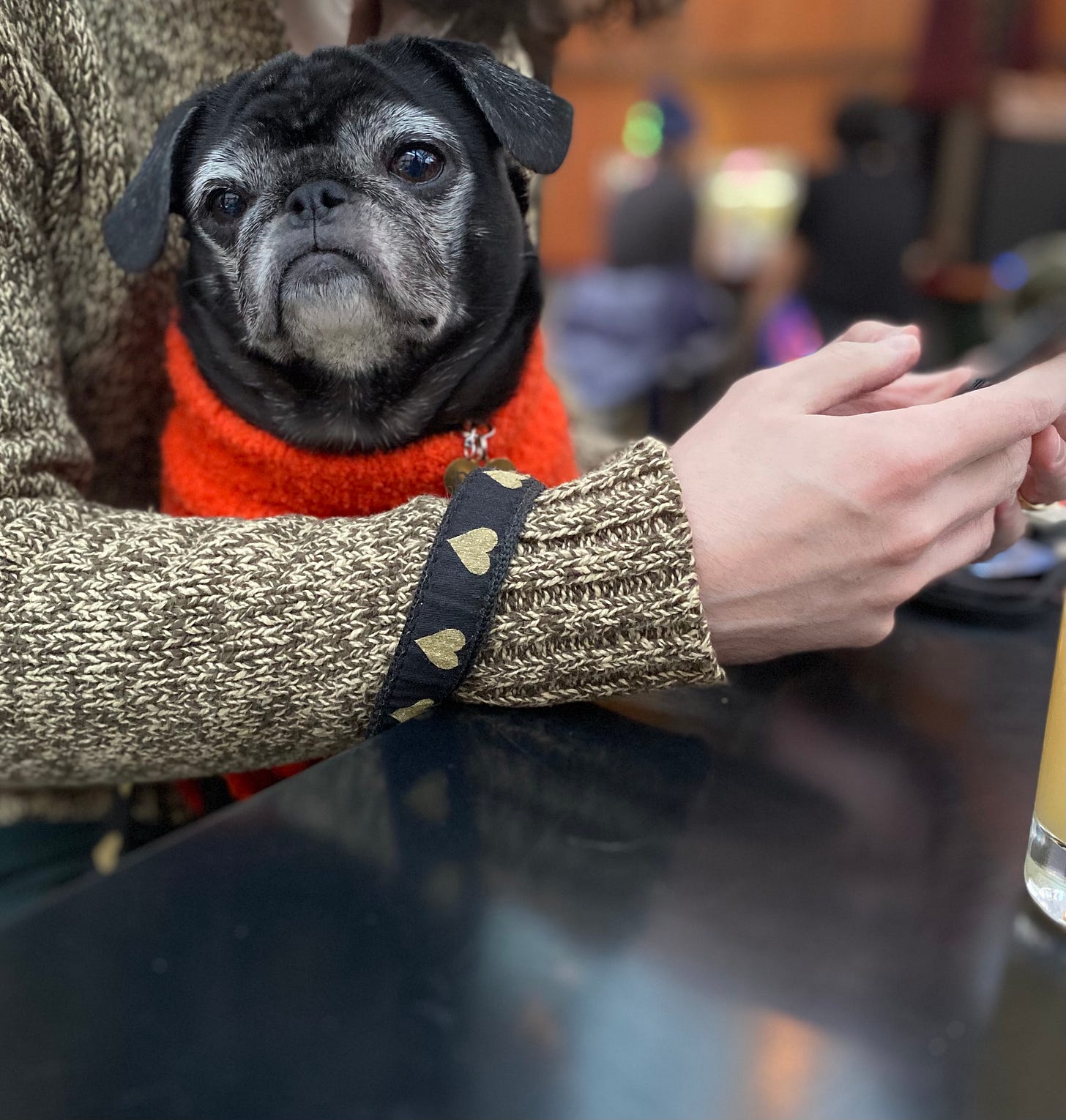32. That's Hot: Craft Beer's Wild Ride from Pliny the Younger's 2005 Debut to Now
Indulging in nostalgia as a lens to view just how much craft beer has changed in 17 years; plus this week's tarot says drink TALEA.
How Pliny the Younger Created an Industry Where There Can Be No More Pliny the Youngers, or What It Means to Watch an Industry Morph in Real Time
Where were you in February of 2005? Were you wearing a Von Dutch hat? Ed Hardy leggings? A Juicy tracksuit? Uggs? Were you B-A-N-A-N-A-S for Gwen Stefani, or scream-sobbing along to “Adam’s Song” over Blink-182’s indefinite hiatus announcement?
Or, were you at the Russian River brewpub sipping the first ever batch of Pliny the Younger? Kudos to you if so, Cool Kid.
Lining up craft beer’s short history with pop culture and our own memories is a temptation I often find myself giving into. This is due in large part to nostalgia. But it’s also because craft beer is one of the few things I can think of that was only born a handful of years before I was, then only started growing into what we know it as today when I was already old enough to have discovered the thrill of collecting whales (I’m talking about Beanie Babies, of course). I realize that’s the most navel-gazing way possible to describe the fact that craft beer is nascent compared to other things any of us might be interested in (Sports, for example! Significantly older than craft beer, I’m told.). My point is that because craft beer is so young, relatively speaking, most of us can harness our own unique relationships with it and connections to our memories around its evolution. What else has come along and boomed into an entire industry, community, even way of life for some in our own lifetimes? Okay, fine, computers and the internet and cell phones—boring.
Last week, Russian River owners Vinnie and Natalie Cilurzo announced the Covid-prompted postponement of the epic annual Pliny the Younger release. My mind flashed back to the only time I ever sipped the stuff: 2011, at Rattle N’ Hum in Midtown Manhattan. Yesterday, and a lifetime ago, all at once. Just a decade ago, the pursuit of craft beer even in a city like New York had a thrill-of-the-hunt element. I lived on the Upper East Side and there were very few craft beer bars in the neighborhood—a particularly great one that even had cask ale, if I’m not mistaken, was David Copperfield’s, and that sadly closed in 2012. We’d schlep to places like Spitzer’s Corner on the LES (also RIP), d.b.a. in the East Village, Blind Tiger in the West Village, Spuyten Duyvil in Williamsburg, and along with Rattle N’ Hum, Ginger Man in midtown (omg also RIP, wow ok).
Some of my best beer memories took place at Rattle N’ Hum, and they all make me super nostalgic for a period that was both early in my own personal craft beer journey but also early in the journey of contemporary craft beer itself. A Dogfish Head tasting where the entire crowd was blown away by beers that, back then, felt truly wild. A Pretty Things tasting where my now-husband and I couldn’t believe how long Dann Paquette was willing to talk to us. Tastings and tap takeovers felt different then. No one was jaded yet, it seemed, and it felt like we were all experiencing new things together, strangers excitedly talking with other strangers like old friends about our common interest. This included the night our bartender pulled his muled bottle of Pliny the Younger out and treated a few of us at the bar to tiny pours.
And this was six years after Pliny the Younger debuted. I can’t imagine how exciting that first release must have been. I could be wrong, but I’d bet that Pliny releases are one of the very few instances where, up until the pandemic, that unmitigated little-kid excitement many of us have lost in craft beer returns and thrives. The joy that ubiquity, hazy homogeny, and a culture too often contaminated by discrimination has diminished. Something about the annual release of a beer so beloved, so limited, and so time-honored (within a young industry) just somehow feels still pure.
The birth of a beer like Pliny the Younger was special in 2005. Just think about the time. Craft beer existed, sure, but felt so much more niche—again, you really had to go out of your way to find it, and it often meant pulling up a barstool in a grandfathery brewpub or spartan taproom none of your friends wanted to come to with you.
To really bring you back to 2005: Paris Hilton’s Sidekick got hacked. Ashton Kutcher married Demi Moore. And while everyone was still drooling over Paris and Ashton-approved brand Von Dutch, the company’s co-founder Bobby Vaughn shot and killed his friend because he allegedly attacked with him a broken bottle. Perez Hilton started his notorious blog that would at least temporarily change the way celebrity gossip was covered, bringing a whole new level of bullying to its existing invasive obsessiveness. Oh, and it was cool to dress like this.
It obviously depends on how old you are and when you got into craft beer. But personally, I can’t resist the indulgence in nostalgia nor the reflection upon what a different world it was 17 years ago. In northern California, an soon-to-be-influential triple IPA was quietly rolling out among a sea of “40-Year-Old Virgin,” “How I Met Your Mother,” Kanye’s “Gold Digger,” and fashion I think we can all agree was a cry for help. Were you clued in enough to even know what a triple IPA was in 2005? Or were you blissfully unaware, too busy watching “Wedding Crashers” or following the NHL lockout, and only came to craft beer after Pliny the Younger had effectively helped change the entire industry?
It’s interesting because while a brewery like Russian River and a beer like Pliny have managed to retain this simpler, purer shine in craft beer, it is quite literally beers like Pliny that set the wheels in motion for the industry to morph into its present state.
Pliny the Younger was the first triple IPA, successfully signaling to hopheads that yes, IPAs could be more, ya know, IPA-ish. One could argue between double IPA Pliny the Elder and this triple, Russian River played an integral role in cranking up the desire for more hoppiness among American craft beer drinkers. In 2005 and really up until several years ago, a triple IPA was still not the absolute old hat that it is today. It was unique. It was exciting. It was worth making pilgrimages from all over to get—and because Pliny the Younger is such a good, seminal example, it’s still worth that even when you can probably walk a block in any direction and get some such TIPA. When it debuted, Pliny the Younger was exciting because it was novel. Now, it’s exciting because it’s still better than most of the competition. But it’s in no small part responsible for causing the growth of so much competition in the first place.
And Pliny the Younger didn’t just help create a beer industry racing to keep up with consumer demand for more hoppiness. It helped create the kind of culture where it’s normal to book airfare and lodging to score a beer, or on a smaller scale, to line up in the wee hours at a brewery closer to home for a limited release. Trading, muling, reselling. This is what craft beer culture today is and we have just a handful of beers like Pliny the Younger to thank—except who can be mad at this beer? In hindsight, it felt purer than today’s hypebeast machine then, and it still feels that way now.
Poor Pliny the Younger certainly didn’t mean to poke the first domino that would lead to, 17 years later, a craft beer consumer base brimming with neckbeards and the like. But while few have come close to achieving the goal, this beer did motivate thousands of other brewers to try to satiate drinkers’ hop demands; in theory, Pliny the Younger helped create an industry in which I can’t imagine ever seeing another debut like it. It’s really hard to imagine a brewery in 2022 essentially inventing a new substyle and their example is so fantastic that it singlehandedly generates millions of dollars for the brewery’s hometown economy—and continues to do so for years to come, and never loses its integrity.
In 2005, do you think you could have imagined an industry in which Monster Energy purchased even a large craft brewery collective?
Beer Tarot!
Two weeks of cups in a row: This week I pulled the Two of Cups.

Cups is the sign of love, emotions, and relationships, as a reminder. The Two of Cups in particular deals with partnership and mutual love and/or attraction. Just look at those lil cuties cheers-in.’ (That’s not what they’re doing, exactly, but this is a beer newsletter, so creative license.)
What they are actually doing is exchanging cups—there is a meaningful exchange happening in this card, in general. The Two of Cups is absolutely not limited to romantic partnerships. It can speak to friendships, business partnerships, or any mix of the above. The takeaway is that you just have, are about to, or are looking to enter into a truly fulfilling, meaningful partnership, one built on mutual feelings and respect and an exchange of ideas and/or emotions. In this partnership, each person makes the other feel seen and heard, they are in sync even when not in total agreement, and they complement each other. They bring out the best in one another.
If you have already entered into this kind of partnership, congrats. Think about how to keep it fulfilling and healthy for both of you, whether it’s love, friendship, or business. If you’re about to (or looking to, since you can’t predict the future), really think about what qualities the other person would have to possess in order to create this nice, balanced, productive yin and yang with you. What can’t you live you without? What would really complement your interests or skills?
When thinking about a business partnership—and friendship—that is clearly one to take notes on and that has led to a beautiful business and standout beers, TALEA instantly came to mind. Take a listen to Hannah Kiem’s Brews with Broads podcast episode with TALEA co-founders Tara Hankinson and Leann Darland to see what I mean. And then drink their Spicy Hot Chocolate Stout, which I am obsessed with—and which is also perfectly balanced!—or their versatile Al Dente Italian-Style Pilsner.
This Week’s Boozy Reading Rec
This week’s issue looked to the past in craft beer, so let’s end it looking to the present and future. It’s wild to think that in only 17 years, between the Pliny debut and Monster Beverage’s purchase of Canarchy, we already went from independent breweries just really springing up and garnering followings to independence being nearly impossible for larger operations. Do you know what else happened in 2005? The merger that formed the Brewers Association as we know it. Formed in 2005 to support independent breweries, making wild decisions in 2022 like allowing Canarchy to remain a member even though it’s now owned by a billion-dollar company. Jeff Alworth has a thoughtful take on this, the challenges for large breweries, and where we’ve come to in the craft beer industry on his blog Beervana, with “The Limits of Independence.”
Until next week, here is Darby at Evil Twin last week, where you can’t see much beer but I just love her face.








You have me feeling nostalgic, I miss Rattle N hum (RIP, the newer one is hotel lobby...SMH) had my first Bourbon County there on a release night. It was a Richardson bar to during the NCAA met a bunch of their supporters there drinking $8 Coors Lights while we had our crafts. Blind Tiger got to meet Garret Oliver on a Brooklyn Brewery takeover night and drink barrel aged Black Ops. The original OH being crammed into that tiny taproom making friends without a choice marveling over all those new IPAs. First time at Peculiar Pub. Good times